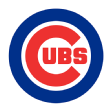Now that the 2018 MLB draft is in the books, it's time to break down notable picks from this year's class. Today, it's the National League's turn, and on Friday, I'll examine the American League.
I liked the D-backs' first two picks, just in the opposite order. They took Matt McLain (1) in the first round and Jake McCarthy (1A) in the sandwich at pick 39. I think McCarthy, if healthy, is the clearly better prospect because he can play center field and has plenty of hit tool to be above average. Meanwhile, McLain is an undersized prep infielder who won't stay at short and really has to hit. I think you're hoping he's Alex Bregman, who was also an undersized prep infielder who really had to hit but did hit everywhere -- in high school and in three years at LSU (and, last I checked, he hasn't stopped). Outfielder Alek Thomas (2) was a very good value in the second round to cap Arizona's Day 1.
Jackson "The Auteur" Goddard (3) had a rough spring, missing about five starts with an oblique injury and walking 28 guys in 52 innings. He's 92-94 mph with what looks like a potentially average changeup, and his delivery isn't bad at all, but he needs to throw more strikes, and his breaker is fringy. He might be a starter with health and enough reps, but I find his films pretentious and his characters thinly drawn.
Wright State right-hander Ryan Weiss (4) has some back-end starter potential, with a fastball sitting 90-92 from a pretty high arm slot that gives him a lot of depth on an upper-70s curveball, and he does throw a lot of strikes. Matt Mercer (5) of Oregon is a pure reliever, touching 97 but never sitting there as a starter, with below-average control and too much hard contact for that velocity.
If Travis Moths' (7) name is familiar, that's because Tennessee Tech handled him in a completely irresponsible manner in regionals this past weekend, throwing him in relief in both games Monday less than 48 hours after he made a 90-pitch start.
Levi Kelly (8) was a big name as a high school sophomore when he committed to LSU and transferred down to IMG Academy in Bradenton. The right-hander has grown to 6-foot-2 and will touch 95, though with effort that might shift him to a relief role.
Carter Stewart (1) was the top prep player in the class, in my opinion, up to 98 with a plus curveball, big league size and a good delivery he can repeat. Greyson Jenista (2) of Wichita State is a big, left-handed power hitter who can crush a fastball but couldn't pick up off-speed stuff at all in my looks; I think he's too likely to end up a DH.
Tristan Beck (4) missed all of last spring with a back injury and wasn't very good this year in his return, striking out well below a man per inning in a down year for the Pac-12. Prior to the stress fracture in 2017, he offered three average pitches with the potential for above-average or better command and some hope that he would project to better velocity, though that hasn't come yet.
Trey Riley (5) transferred from Oklahoma State to a junior college this year. He's up to 96 with a tight slider and punched out 117 in 77.2 innings with 32 walks this spring. Center fielder Andrew Moritz (6) is a 6 runner with a short swing for contact but probably no power, given his wide stance and lack of any stride or weight transfer. He might sneak into regular status because he should stay in center.
Nico Hoerner (1) is a high-contact singles hitter from Stanford who was one of the few shortstops in the draft whom you could project to stay at the position long-term. He doesn't have power and rarely walked, but hitters who strike out this seldom are rare, and scouts absolutely raved about the kid's makeup and instincts on the field.
Brennen Davis (2) is a plus runner and center fielder who is an outstanding athlete but a long way off with the bat. His stock was hurt a little by a hamstring injury that kept him from running all-out much of the spring. I'm also annoyed that there was a prospect playing less than two miles from the house I owned and sold in 2013. Great timing, fellas.
Cole Roederer (2C) is a center fielder now with good feel to hit but has a hitch in his swing that probably has to be cleaned up for him to become a good hitter in pro ball. He also likely ends up in a corner where his fringy power could become an issue, so I'm not sure what the carrying tool is here. Paul Richan (2C) has been up to 94 as a starter with an average breaking ball, missing bats and never walking guys, while giving up a lot of hard contact due in part to the present lack of a average third pitch. He should go out as a starter with the obvious caveat that he'll need that additional weapon to stay there. Outfielder Jimmy Herron (3) has an elbow injury that might require Tommy John surgery. But if his arm recovers, he's a center fielder with a good eye at the plate and a simple swing for contact without much power.
Ethan Roberts (4) was an "unbelievable Trackman" guy, which means his pitch data drove him up the board. He'll work with four-seamers up and a hard cutter/slider with a huge spin rate. He has missed a ton of bats for Tennessee Tech on the road to the supers and gets ground balls as well. He's the sleeper of this class for me. Andy Weber (5) led UVA in average, OBP, slugging and even homers (OK, he had five) this spring while playing a solid second base -- he might be a little better than fifth round, even with the lack of tools, because he also doesn't have a glaring weakness, and I wouldn't be shocked to see him turn into a fringe regular. D.J. Artis (7) was on the back of my top 100 as a guy with a chance to be a regular in center. He can run and has hand strength but needs to work more on driving the ball.
Jonathan India (1) was probably a second- or even third-round guy coming into the spring. Then he destroyed the SEC, hitting .373/.522/.765 just within the conference, which is consistently the best in college baseball. He's a third baseman now, but he could certainly play second, and I would send him out as a shortstop and see how it looks -- it's not out of the question that he could play there. Lyon Richardson (2) might end up throwing in the upper 90s with some delivery help -- any delivery help, as he's really just a thrower right now -- but there's reliever risk here too, given how unpolished he is. He's a plus athlete, though, and he gets on top of the fastball very well to drive it down toward the zone. Josiah Gray (2A) is a converted shortstop who touched 98 last summer, without any life or plane on him, but he sat more average this spring with a fringy breaking ball. He throws a ton of strikes, and his stuff could play right back up in a relief role.
Bren Spillane (3) has 70 raw power and obviously performed all spring, slugging an absurd .903 with 23 homers, although he also punched out 57 times (26 percent of PA). He should go out as a right fielder, as he's an average runner, but he could end up at first base. There's some Rob Deer to him, and even with a low batting average, he might end up having a Deer or Russell Branyan sort of career. Mike Siani (4) was a potential first-rounder even after a rough spring, the result at least in part due to an attempt to optimize his launch angle for more power. But he's more of a contact/speed guy who can and should spray the field with line drives and let his legs add some value. He's a good athlete who can play center and might be an incredible value at this pick because of the bad senior year and the awful weather in the northeast that limited looks. The Reds largely went for under-slot guys after Siani to pay for their first few picks.
Ryan Rolison (1) is a really interesting gamble for the Rockies for two reasons. One is that he's a big curveball guy, and that generally hasn't been their preference when going after pitchers in the draft. The other is that someone altered his delivery in the spring to make him very cross-body, and he might have some real upside here if the Rockies get him consistently back on-line to the plate. There's No. 2 starter upside with his plus fastball, if they get him straightened out and the breaking ball plays at Coors.
Grant Lavigne (1A) is a big power bat from New Hampshire, limited to first base, but with upside both in average and home run potential. Right-hander Mitchell Kilkenny (2A) will show three average pitches, 92-94 plus a slider and a changeup, and he throws strikes. He shows good extension out over his front side, but the lack of a clear plus pitch might make him more of a back-end starter. University of Minnesota shortstop Terrin Vavra (3) had an incredible year for the Gophers, with more walks than strikeouts and a .393/.463/.631 line. He's going to end up at second base, but his left-handed swing looks like it'll produce contact and above-average power, which should make him a regular over there. He earns a lot of praise for his instincts and feel for the game and should play above his tools.
Ryan Feltner (4) is a slightly built right-hander who's 93-97 with a plus changeup and 45 breaking ball, enough stuff to start but not the command or control, and he might be a dominant reliever. Third baseman Niko Decolati (6) was something of a surprise pick in the top 10 rounds after a season in which he hit .271/.367/.444 with 60 strikeouts and 23 walks. He has a severe leak at the plate that has probably contributed to low contact rates his whole career. Andrew Quezada (7) is a converted shortstop who throws way across his body, up to 93 with a solid-average changeup, throwing strikes but rarely missing bats -- and the delivery will make it hard for him to work to his glove side.
The Dodgers' draft revolved primarily around two prep arms who might command over-slot deals, with other players coming in at or under slot to help pay for them. JT Ginn (1) had some of the best pure stuff of any teenaged pitcher in the draft, with two grade-7 pitches on some nights. He's very athletic, but I thought his delivery was violent enough that he might not last as a starter, due to poor command or potential injury. Had his delivery been cleaner, he likely would've been a top-15 pick.
West Virginia pitcher Michael Grove (2) missed the spring after Tommy John surgery but before that was 90-96 with an above-average breaking ball and starter questions because of some effort in the delivery. John Rooney (3) from Hofstra -- the second-highest pick in the program's history -- is a right-hander up to 93 with a potential swing-and-miss offering in the slider, but he projects strictly in relief.
Braydon Fisher (4) didn't pitch last summer, so he was sort of a "pop-up" prospect, starting last fall with a good showing at the Perfect Game championships in Jupiter, Florida. He's very raw, with a short stride and over-rotation in his delivery, but he's very athletic, his arm is really loose, and he's 90-95 already.
Louisville second baseman Devin Mann (5) might be a regular as a low-average guy with a decent OBP and some pop. A right-handed hitter, he has good rotation in his swing and can keep his hands inside the ball well enough to hit pitches on the inner third, though he hit just .303 this spring with too many strikeouts for his profile of player. Bryan Warzek (6) was abused by the University of New Orleans last week in their conference tournament, throwing 110 pitches in a start and then throwing 42 pitches in a relief appearance two days later.
Sacramento State outfielder James Outman (7) has some hand speed, but he hit an identical .253 each of his past two years for the Hornets (58-for-229 both years, which is weirdly impressive) with more strikeouts than hits each season. Florida second baseman Deacon Liput (10) was suspended for the first quarter of this season for an off-field issue and never quite got on track once he started playing. He was a potential top-five-rounds pick as a utility infielder type if he could make enough contact for it.
The Marlins' draft was pretty athletic overall, starting with two very good athletes in Connor Scott (1) and Osiris Johnson (2). Scott, from Plant High School near Tampa, was very good when healthy this spring, showing plus speed, good defense in center and a rotational swing with great hand acceleration. He's also extremely projectable, 6-foot-4 but listed at 180, with obvious room to fill out. Johnson isn't staying at shortstop for long but is a very good athlete and has quick, loose hands at the plate with a potential plus hit tool that might require some patience from the Marlins' player development staff.
Will Banfield (3) was one of the top prep catchers in the class, possessing more power than hit at the plate and is a solid athlete for a backstop with plus arm strength. Tristan Pompey (4) is an above-average runner with plate discipline and power, but he played left field for Kentucky because he's a well below-average defender in spite of the athleticism.
Ole Miss catcher Nick Fortes (5) had a breakout junior year, hitting .320/.435/.527 while going from zero steals to 14 and from five homers to 11 and drawing almost twice as many walks as strikeouts. He's a below-average defender who has arm strength, but even if he's a once-a-week catcher, he might have value as a bench guy who can pinch hit and play first or left field. Viscount Chris Vallimont (6), from Division 2 Mercyhurst, is 92-96 with a plus curveball, striking out a hilarious 47 percent of batters he faced as a starter this year. The 6-foot-5 right-hander doesn't have average command and might end up in relief, but I'd send him out as a starter.
Cameron Barstad (7) -- please type that carefully, everyone -- comes from Junipero Serra HS, alma mater of Barry Bonds and Tom Brady. He's a left-handed-hitting catcher with a quick release and good hip rotation in his swing but a major overstride that leaves him hitting uphill.
Brice Turang (1) is a plus defender at short with a plus arm and can show a little power at the plate, but he hasn't hit well over the past year, and there's a fair question whether he has the bat speed to be even an average hitter in the future. The defense alone should get him to the majors, but any upside is going to require him to beat expectations for the hit tool.
Joe Gray Jr. (2) can flash some first-round tools and looks the part, but he hasn't hit well against good competition in showcases. Mississippi prep bats are a historically dangerous draft class, and Gray didn't endear himself to scouts this spring in home visits. In the second round, it's a reasonable bet on first-round physical gifts. Hawai'ian prep outfielder Micah Bello (2A) is a plus runner with strong hip rotation in his right-handed swing, though he didn't face much good pitching on the Big Island this spring and had to make his bones last summer on the showcase circuit. The St. Mary's commit won't turn 18 until late July and could end up with a valuable speed/power combo, depending on how his body fills out.
Aaron Ashby (4) struck out 156 this year in 74.2 innings for two-year Crowder College, with an excessive 43 walks. He's up to 94 and has a power curveball that gets a ton of swing-and-misses. Right-hander Justin Jarvis (5) has hit 95 but pitches more at 91-92 from a very high ¾ slot that gets him on top of the fastball, and his breaking ball is well below-average. He's still fairly projectable, at least. Drew Rasmussen (6) was the Rays' pick last year at 31 overall, flunked his post-draft physical and returned to Oregon State, but he immediately had to have a second Tommy John surgery and missed the season. He was worked very hard by the Beavers after a quick return from his first TJ, and I have no idea what to expect from him or ligament No. 3 going forward.
The Mets took the first prep player of the 2018 draft in high-ceiling Wisconsin outfielder Jarred Kelenic (1), who clearly established himself as the best high school position player in the class and had been in consideration at pick No. 1. Kelenic has All-Star center-fielder upside with power, speed and a plus-plus arm, and his swing is certainly geared toward driving the ball to all fields. One knock on Kelenic is that he'll turn 19 next month -- he graduated from high school in December -- and another is that the competition he faced in Wisconsin, even playing on a travel team, was not very good.
Texas right-hander Simeon Woods-Richardson (2) is a great athlete and competitor, up to 94 from a high slot with a breaking ball that's above-average when he lands it. There's some effort to his delivery, and he's probably maxed out physically at 6-foot-3, 210 pounds. He showed better velocity last summer in shorter bursts. Carlos Cortes (3) was a top-100 prospect out of high school, and I still love his swing, but he hit just .260/.379/.507 this year, with a low BABIP derived from weak contact. He's also limited to left field. His teammate, right-hander Adam Hill (4), struggled to throw strikes most of the year, with 50 in 79 innings (including seven walks in three-plus innings when I saw him against Kentucky). It's a low slot and some cross-body to the delivery, so he's effective right-on-right, but I don't see a starter package here. Clemson reliever Ryley Gilliam (5) is a one-inning, max-effort guy, 93-95 with a power curveball in the low 80s, but he walked 22 in 38 innings this year for the Tigers.
Catcher Nick Meyer (6) is a no-doubt big league backup as long as he hits enough to get there. He has a super-short swing and makes a ton of contact, rarely walks and didn't homer all spring, with three total in 600 career at-bats for Cal Poly. Georgia lefty Kevin Smith (7) is a low-slot, crossfire guy who should be very hard on left-handed hitters but might be limited to a specialist role. Bryce Montes de Oca (9) has hit 100 mph and shows a plus slider, but strikes have been a serious problem, and by the end of the season, Missouri was barely using him. He has to go to the bullpen, but of course with that stuff, he could profile as a high-leverage/late-game option.
The Phillies picked third overall and didn't pick again until the fourth round, pick 107, as a result of signing free agents Jake Arrieta and Carlos Santana. Alec Bohm (1) is a big (6-foot-5, 225), fairly athletic third baseman who projects to hit for average and power, with the arm for third base or right field but a body that might eventually push him to first. He has shown that he can drive the ball to all fields and recognizes off-speed stuff well. He moves better than you'd expect for his size.
Colton Eastman (4) pitches in the upper 80s with tremendous deception in his delivery, and in his two healthy seasons as a starter for Fullerton, he walked 46 total in 204 innings. I think he's a back-end starter because of the command and the plus changeup, even with below-average velocity. Notre Dame center fielder Matt Vierling (5) has a little pop, a little speed and a decent eye, and he doesn't strike out too often. He has really quick hands at the plate, and I think he's the sleeper of the Phillies' crop this year, with everyday player upside if he stays in center. Georgia prep shortstop Logan Simmons (6) probably moves to third base or second, but there's everyday upside in his power if he hits enough to get to it. He'll have to work on his approach and maybe make a swing adjustment or two to get there.
Dominic Pipkin (9) was a two-way player in high school, but his future is on the mound. He's been up to 97 with promising spin on the breaking ball, and I know scouts who think he could hit 100 mph when he fills out, though that would probably be in a relief role.
South Alabama center fielder Travis Swaggerty (1) had a disappointing spring that probably cost him a shot at being a top-five pick, which could mean this was a great value selection for the Pirates at 10th overall. Swaggerty is a true center fielder, is a 65 or better runner, can work the count and shows at least average power, but he didn't hit well this spring in a bad conference. He tweaked several things in his stance and swing, so perhaps this is just a matter of getting him back to what he was before the season started. His secondary stats were all good, and the speed and defense never wavered.
Florida prep right-hander Gunnar Hoglund (1A) did a great job cleaning up what had been a violent delivery before this spring. He's been up to 96 and tightened up his breaking ball. He's a great athlete as well, and the Pirates have had some success with taking guys such as Hoglund who are a little unrefined and still projectable, such as Mitch Keller and Braeden Ogle.
Braxton Ashcraft (2) was a reach for me in the second round, a slight pitcher who has touched 92 but showed a lot of 87-88 this spring in front of scouts. He does extend very well over his front side to help the fastball play up.
Connor Kaiser (3) is an above-average to plus defender at shortstop but with serious bat concerns, striking out in a quarter of his at-bats this spring. He had four career homers in three years with the Commodores before he rolled out a crazy three-homer outburst in Vanderbilt's regional game against Clemson over the weekend. Cal right-hander Aaron Shortridge (4) is a command/control starter, 88-92 with good extension out front and some feel for a curveball in the upper 70s. He's not going to miss a ton of bats with that stuff, but I could see a fifth or maybe even fourth starter here. He accelerates his arm very quickly but a tick late relative to when he lands.
Arkansas catcher Grant Koch (5) was the best hitter on Team USA last summer, then he hit .250/.366/.397 this spring for the Hogs, with the lowest average and slugging percentage of any of Arkansas' eight regulars and second-lowest OBP. He's an adequate receiver and thrower, but this has to be a bet that his spring production was an anomaly. Michael Flynn (6) -- tough name, kid -- was one of the many overused starters at Arizona the past three years (but I'm told he got plenty of naps), and he projects as a back-end starter due to his smooth delivery and the command that he gets from it. Lack of above-average secondary stuff limits his ceiling. Outfielder Brett Kinneman (7) has an intriguing power/speed combination but punched out 65 times this spring for NC State after a really rough performance on the Cape last summer.
Prep lefty Ryan Weathers (1) was one of the most polished high school arms in the draft, and he showed very well at the end of the spring once he was fully in baseball mode after taking his high school basketball team to the state Class A championship (and winning tournament MVP). He's been up to 95-96 with an above-average breaking ball and shows very good command for an 18-year-old. His father, David, played for nine teams over a 19-year career in the majors.
Xavier Edwards (1A) is a plus runner with the actions for short, but his arm might push him to second or even to center field, while at the plate he has a short swing that should produce lots of contact but little power unless he gets his lower half more involved. He's a future regular with a high variance in outcomes because of how much development remains.
Grant Little (2A) raked for Texas Tech in a down year for the Big 12 as a whole, hitting .380/.480/.670 for the Red Raiders (though none of those numbers led the team). He's a left fielder with a pretty, right-handed swing, generating solid-average power from his hip rotation, though he tends to land a little open after his stride. He's a draft-eligible sophomore who'll turn 21 two days after the signing deadline. There's everyday player upside here, but the bar is high for a player who might be limited to left field.
Illinois State shortstop Owen Miller (3) probably doesn't stay at the position long-term, especially not with the 57 shortstops already in the Padres' system, but he has good feel to hit and cut his strikeout rate by almost half this spring, giving him upside as a multi-position infielder.
Missouri State right-hander Dylan Coleman (4) has been up to 99 but has below-average command and control -- 59 walks in 102.2 innings is kind of a problem -- and his slider is hard but not plus, at least not when he starts. He's a clear candidate to move to the bullpen.
Dwanya Williams-Sutton (5) is an intriguing buy-low guy. The East Carolina outfielder has had thumb and wrist injuries the past two springs, but he still managed to hit .331/.477/.556 in limited playing time (aided by 14 HBP). He has a big swing that generates plus raw power, and he's an above-average runner who profiles as an above-average right fielder.
Jawuan Harris (7) played football and baseball at Rutgers, with plus speed and potentially plus defense in center, but he kind of can't hit (.246/.375/.387 this year, 27 percent strikeout rate) and there are real questions about his makeup.
Catcher Joey Bart (1) was the second overall pick and the first position player drafted this year. The Georgia Tech backstop has plus power, is an excellent receiver, has called his own games this year and has a plus arm. The main question everyone has on him is the hit tool, which is below-average now and might always be so, as he swings and misses quite a bit and doesn't have elite bat speed. He can hit .240 with walks and power and still be an All-Star because of the value of the position and defense.
Kentucky right-hander Sean Hjelle (2) is 6-foot-11, the tallest pitcher I've ever scouted, and though he's just 89-92, he should be able to get that to play up because of his height and the extension he can have toward the plate -- something the Giants should be able to work with him to maximize. Height isn't necessarily a tool (I've heard it doesn't measure heart), but it can't hurt to have it.
Jake Wong (3) became the fourth-highest draft pick in Grand Canyon University history and the first player taken from GCU in the top five rounds since 1993. Wong has a good arm with a plus fastball and fringy breaking stuff, with average control but below-average command. He could end up a fourth starter with a more likely outcome of a relief role.
The Giants drafted right-hander Blake Rivera (4) for the second year in a row; the junior college pitcher has been 94-97 with an above-average breaking ball and should go out as a starter, even though the effort in his delivery might push him to a relief role. They also drafted Keaton Winn (5) for the second year in a row. He's also a junior college guy, almost exclusively a reliever for the Iowa Western Reivers (I love that nickname, and Faulkner University should steal it), who punched out 59 in 36.1 innings with a plus slider and fastball up to 94. Patrick Hilson (6), the first prep player the Giants took, is an 80 runner with a plus arm and a terrible swing. Right-hander Solomon Bates (8) pitches mostly at 90-92 from a high slot that gives his breaking ball a little depth, but his fastball is still too flat, and he looks like a reliever in the making.
Nolan Gorman (1) had the best raw power of any significant hitting prospect in the draft, high school or college, 80 raw with a lot of swing-and-miss right now, as he got very pull-conscious this spring. He's a below-average third baseman now but athletic enough that he might stick there with work. The Cardinals took Griffin Roberts (1A) with the extra pick MLB gives them every year for having the best fans in baseball. The Wake Forest reliever can show three pitches, with a plus slider that is edging up toward a 7 but a brutal arm action that will be hard for him to repeat as a starter. He could move very quickly in relief and be plus in that role.
Luken Baker (2A) has huge raw power but might be a DH in the end; he could be a right-handed Matt Adams. Prep shortstop Mateo Gil (3), who has also played third and pitched, is a potential power bat with a little length to his swing but good rotation and loft. He's a 40 runner and probably won't stick at short, though it seems like that's where the Cardinals will start him.
Steven Gingery (4) missed all of the spring with Tommy John surgery after he blew out in his first outing this February. Prior to the injury, he had a plus changeup, average fastball and fringy breaking ball, throwing strikes and getting swing-and-misses with the change. If he comes back completely healthy, he's a back-end starter. Maryland second baseman Nick Dunn (5) has great bat speed and should hit for extra-base power, but he is a below-average runner and fringy defender at second. He might still hit enough to be a regular there in a best-case scenario, and he had great plate discipline numbers this season for the Terps.
Florida prep right-hander Mason Denaburg (1) -- the only high school player the Nats took in the first 20 rounds -- came out hot in February, hitting 98 in front of big crowds of scouts, but he came down with bicep soreness in late March and missed about six weeks before what turned into a triumphant return. He showed enough to get back into the first round, and the Nats have never been afraid to shoot for the moon on an athletic, high-upside prep arm with an injury question. He has a plus fastball and will show an above-average breaking ball, with No. 2 starter upside if he's healthy and the rest of the package comes along as expected.
Tim Cate (2) was a fringe first-rounder before arm trouble took him out of UConn's rotation for more than a month. He has a 60 curveball and is up to 93 as a starter, possibly too slight to stay a starter but potentially a back-end rotation guy or a very good reliever. Reid Schaller (3) was very interesting as a draft-eligible freshman who missed the past two springs recovering from Tommy John surgery, hitting 99 in relief for Vanderbilt, with the body and delivery of someone who could start.
Oklahoma right-hander Jake Irvin (4) could have gone a round earlier but faded toward the end of the spring, with a rough outing at their regional over this past weekend, but he has shown a 60 fastball and better control in the first part of the season. Arizona State outfielder Gage Canning (5) projects as a fringe regular in center or a good fourth outfielder, a solid player with above-average speed and average power, but a lot of swing-and-miss even in his best season this spring.
Chandler Day (7) has a 70 changeup, but his projection has never projected, and he was 89-91 even in a relief role. He still has the same room to fill out, and his arm works great, so maybe he just develops later. The Nats intend to try him as a starter. They also took a flier late on Zach Linginfelter (19), a sophomore-eligible pitcher at Tennessee who has hit 97 and missed a bunch of bats but has never really thrown strikes even in a relief role.















